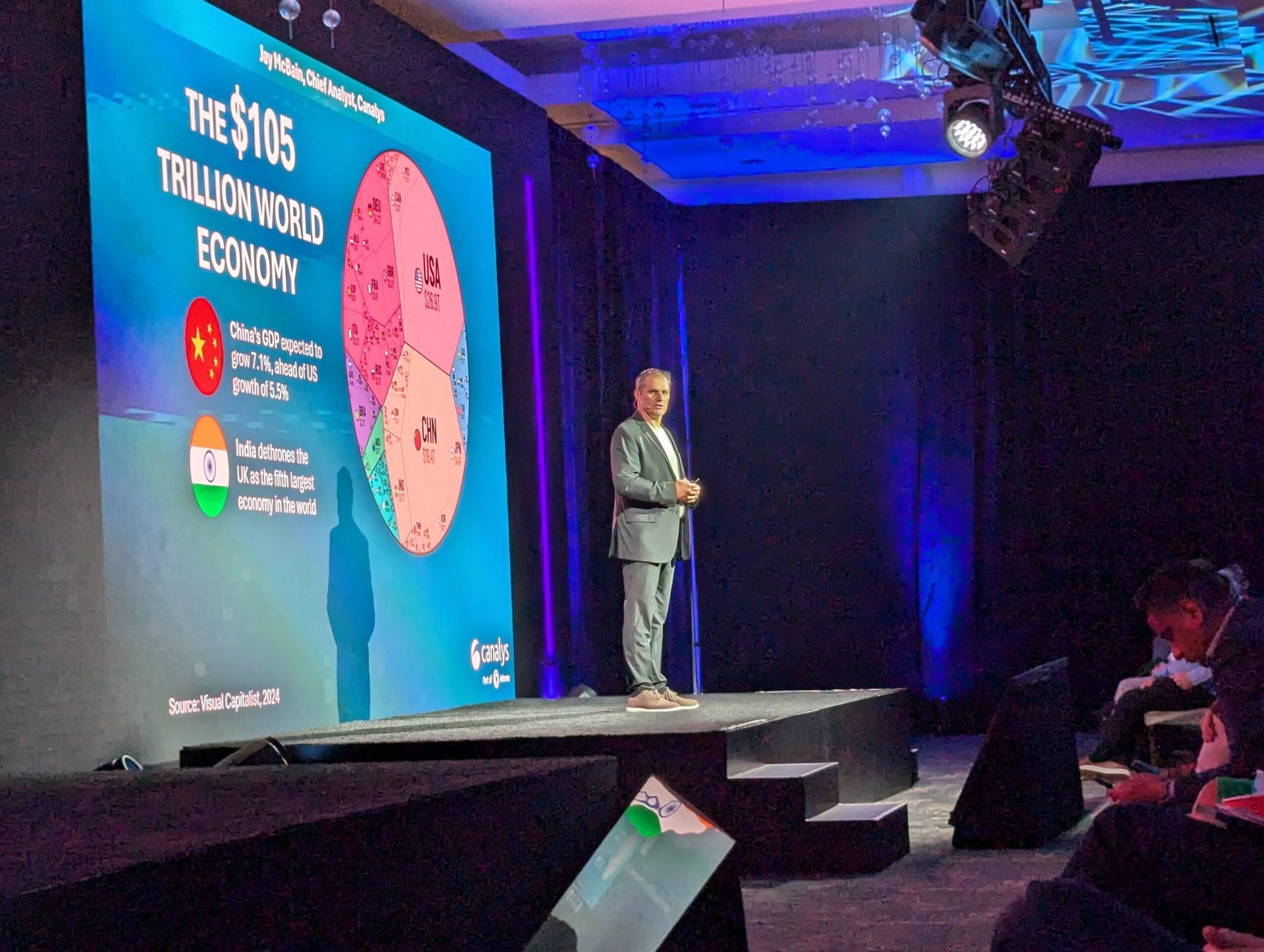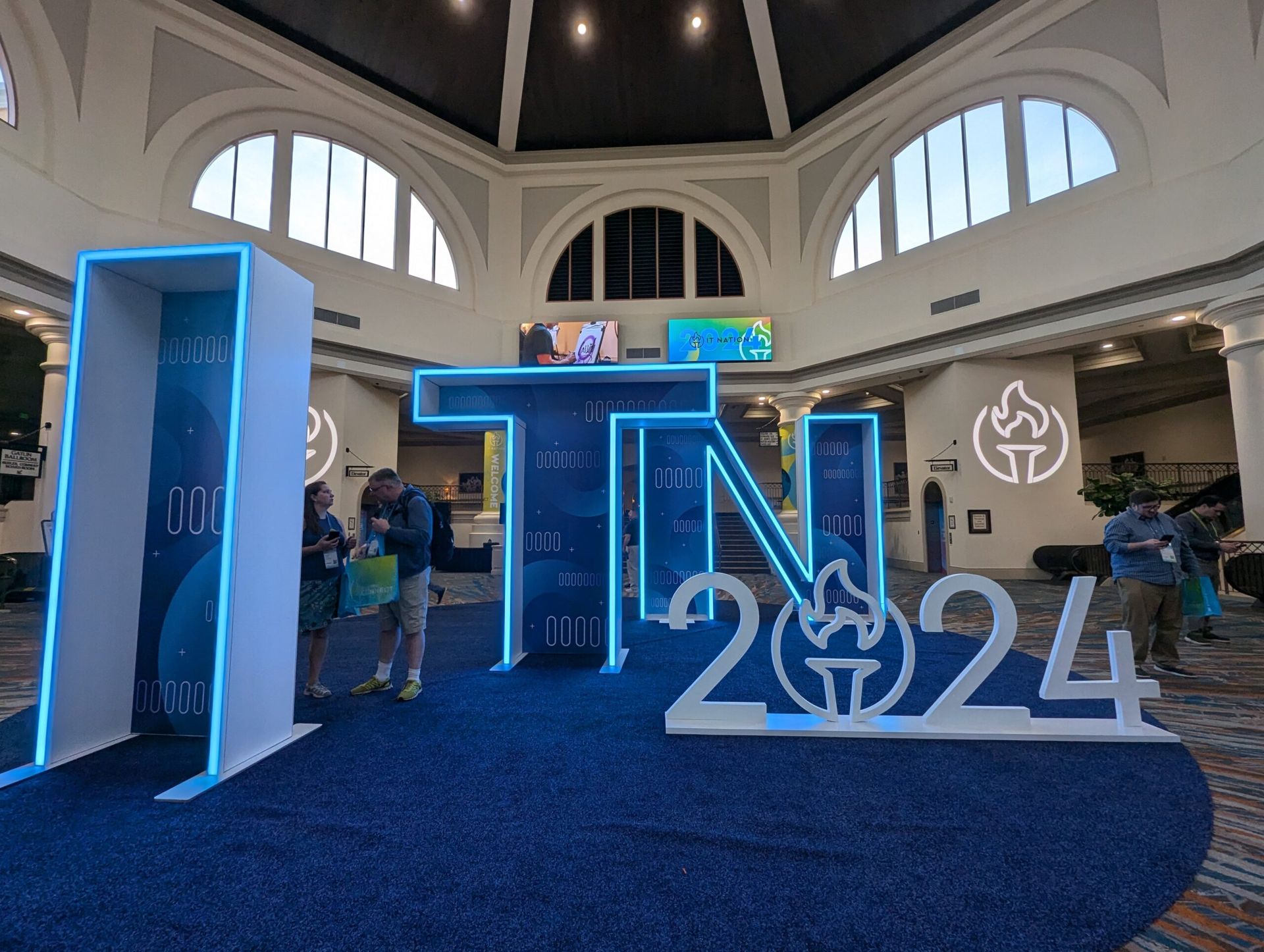MIAMI - Intel will cease to exist in its current form. That’s one of the most striking predictions from market analyst firm Canalys, offered today at the end of an opening session at its North America Forum.
Chief Analyst Jay McBain delivered this final dire prediction for Intel, an icon in the technology industry, at the end of a list of other channel-focused technology predictions for the future. What did McBain mean?
McBain said that Intel may cease to exist in its current form due to a splitting off of its Foundry (outsourced chip manufacturing) business. Or the change may come in the form of an acquisition following the U.S. presidential election in a few weeks.
“This is a company that has been legendary for 43 years in this industry,” McBain said. “These changes at ARM, the GPU-led AI future, mobility turning into PC technology, driving battery life, driving performance at the edge, is going to change this company in terms of the way we see it today.”
Canalys offered a series of other predictions as well for the channel. Here’s the list.
Canalys Predictions: North America Forum 2024
IT spending across software, hardware and services will accelerate over the next three years, supercharged by AI. By 2027, the tech industry will be worth $6.3 trillion. In the next decade, spending will have doubled from this year’s total to exceed $10 trillion.
Top-end AI PCs will deliver close to 400 platform TOPS (trillions of operations per second among CPU, NPU and GPU), but most of this power will go untapped due to software lagging behind. While the hardware ecosystem is evolving rapidly, the software that takes advantage of this AI computing power is not. To avoid fatigue around AI PCs within the channel, significant work still needs to be done to ensure their value proposition lives up to lofty promises.
By 2027, channel partners will outsource between five and seven of their current services to fellow partners (or vendors). This will be driven by four key trends: Stricter compliance and security laws; IT skill shortages; vertical-specific niches like healthcare, finance and government; and the desire to streamline operations and realize cost savings. As specialized vendors and partners expand, they will carve out specific layers of the IT stack to play in.
By 2027, over 95% of distributors will struggle to secure funding to participate in the AI era. It’s expensive to be a distributor. The platform of distribution takes billions of dollars of investment in digital marketplaces, ecosystems, orchestration, and earning one of those seven spots around the customer. (Canalys says that each account engagement touches an average of seven partners.) In the U.S. and North America, there are large, capable distributors that are investing billions in this. Around the world, there are close to 500 distributors that are not going to have the capital and/or credit facilities. Canalys is expecting more consolidation and a difficult time ahead for some distributors in the AI era.
To meet AI energy demands, hyperscalers will rely more on nuclear. Just in the last couple of weeks, AWS, Google, Microsoft, and others announced nuclear investments. These investments will continue to rise, in some cases significantly. This will renew scrutiny not only on uranium mining but also on the risks of waste disposal.
With Nvidia set to join the PC CPU market, ARM-based processors will account for 1 in 4 laptops shipped by 2027. Following Apple’s success with its proprietary silicon and Qualcomm’s renewed foray into the Windows PC space, the outlook for ARM-based PCs has never been brighter, according to Canalys. The firm says it now expects NVIDIA to join the race and bring its expertise in AI and graphics to drive OEM and customer enthusiasm for partners. There will be more products to sell and more competition, which is good for partners. However, the hardware will require managing more complex PC portfolios and overcoming skepticism in enterprise scenarios.
By 2027, half of all global edge services revenue will be AI-augmented. Analyst firm Omdia (a sister to Canalys) noted that this year alone, more than 80% of companies saw reduced costs and improved efficiencies using AI internally. The three internal areas most impacted will be automated customer support, internal RMM and PSA tools, and enhanced marketing and sales. The edge will be the home of AI traffic, and the most revenue- and margin-impacting areas of partners won’t be customer use cases. AI-enhanced tools will be used internally.




